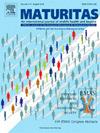Intergenerational patterns of multimorbidity: Evidence from the Australian longitudinal study on women’s health
IF 3.6
2区 医学
Q2 GERIATRICS & GERONTOLOGY
引用次数: 0
Abstract
Objectives
The prevalence of multimorbidity is increasing in many countries due to population aging and other factors. Most studies are cross-sectional, so they do not capture generational differences in multimorbidity. We used longitudinal data over more than 20 years to examine patterns of multimorbidity among cohorts of women of different ages in Australia, and the impact of multimorbidity on their health-related quality of life and use of health services.
Study design
We used data from more than 40, 000 participants in the Australian Longitudinal Study on Women’s Health, a national cohort study with repeated survey data linked to administrative records of health service use. The women were born in 1989-95, 1973-78 and 1946-51 and followed from 2013 to 2019, 1996 to 2021 and 1996 to 2022, respectively.
Main outcome measures
Multimorbidity was defined as the cumulative number of chronic conditions common among women aged 18 to 76 years. General practice and pharmaceutical data were obtained from the universal health insurance scheme. Physical and mental health summary scores were calculated from participants’ survey responses.
Results
The conditions that were most prevalent differed between cohorts. Multimorbidity was higher among women born in 1989-95 than among those born in 1973-78 when they were the same age. Health service use and health scores generally increased more with the number of chronic conditions than with age.
Conclusions
The composition of multimorbidity changes across the life-course. Generational factors other than age contribute to increases in multimorbidity. Projections of future health service needs must consider these complexities.
多发病的代际模式:来自澳大利亚妇女健康纵向研究的证据
目的受人口老龄化等因素影响,许多国家的多病患病率呈上升趋势。大多数研究都是横断面的,因此它们没有捕捉到多病的代际差异。我们使用超过20年的纵向数据来研究澳大利亚不同年龄妇女群体的多重发病模式,以及多重发病对她们与健康相关的生活质量和卫生服务使用的影响。研究设计我们使用了来自澳大利亚妇女健康纵向研究的4万多名参与者的数据,这是一项全国性队列研究,重复调查数据与卫生服务使用的行政记录有关。这些女性分别出生于1989-95年、1973-78年和1946-51年,分别出生于2013年至2019年、1996年至2021年和1996年至2022年。多病定义为18至76岁女性中常见慢性疾病的累积数量。一般做法和药品数据来自全民健康保险计划。身体和心理健康的综合得分是根据参与者的调查回答计算出来的。结果队列间最常见的疾病存在差异。1989-95年出生的女性的多病率高于1973-78年出生的女性,但她们的年龄相同。保健服务的使用和健康得分一般随着慢性病数量的增加而增加,而不是随着年龄的增加。结论多病的构成在整个生命过程中发生变化。年龄以外的代际因素导致多病增加。对未来卫生服务需求的预测必须考虑到这些复杂性。
本文章由计算机程序翻译,如有差异,请以英文原文为准。
求助全文
约1分钟内获得全文
求助全文
来源期刊

Maturitas
医学-妇产科学
CiteScore
9.10
自引率
2.00%
发文量
142
审稿时长
40 days
期刊介绍:
Maturitas is an international multidisciplinary peer reviewed scientific journal of midlife health and beyond publishing original research, reviews, consensus statements and guidelines, and mini-reviews. The journal provides a forum for all aspects of postreproductive health in both genders ranging from basic science to health and social care.
Topic areas include:• Aging• Alternative and Complementary medicines• Arthritis and Bone Health• Cancer• Cardiovascular Health• Cognitive and Physical Functioning• Epidemiology, health and social care• Gynecology/ Reproductive Endocrinology• Nutrition/ Obesity Diabetes/ Metabolic Syndrome• Menopause, Ovarian Aging• Mental Health• Pharmacology• Sexuality• Quality of Life
 求助内容:
求助内容: 应助结果提醒方式:
应助结果提醒方式:


